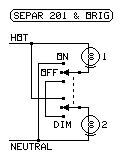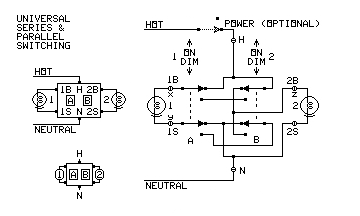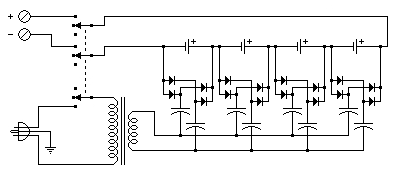|
KEY TO TABLE ENTRIES ON
DIM
SER
CHG
off
−
V
A Hr
Letters indicate closed switches. No letter for a switch, or an o for a switch, means the switch is open, or is in the unlabeled position. |
-
SEPAR 203 and SEPAR 204

SWITCH BATTERY OUTPUT A B C 1 2 V A Hr o o off off 0 0 o B SER SER 2 × 1 × o C off ON 1 × 1 × A o ON off 1 × 1 × A B ON off 1 × 1 × A C ON ON 1 × 2 × This Series-Parallel Switching Circuit can use either battery alone, both in series, or both in parallel.
A later version of this series-parallel switching circuit is (SEPAR 204). The switch positions are exactly the same, but the positive connections are removed if the negative side is opened.
Note that any switch position with a letter on it is the position indicated by that letter in the table.
Remember that batteries are substituted for the lamps shown in the diagrams.
|
|
|||||||||||||||||||||||||||||||||||||||||||||||||||||||||||||||||||||||||||||||||
|
|||



